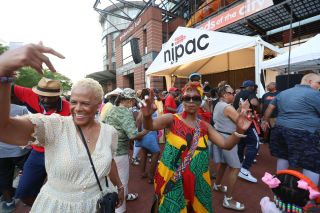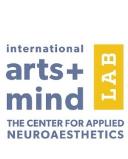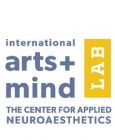Health
Arts on Prescription: An Emerging Model of Mental Healthcare
How "social prescribing" leverages the power of culture for mental health.
Posted September 13, 2023 Reviewed by Devon Frye

By Tasha Golden, Ph.D., Director of Research, International Arts + Mind Lab
What if your doctor could prescribe an art class, a trip to a museum or park, or tickets to a show to help improve your mental health? As unconventional as this may sound, a model of care called “social prescribing” has been exploring exactly these kinds of creative strategies.
Originating decades ago in the UK, social prescribing allows healthcare providers to refer patients not only to conventional treatments, but also to a breadth of local resources that can support health and wellbeing. Referrals are made to services like food banks, exercise programs, educational opportunities, and housing assistance—as well as arts, volunteering, gardening, and more. The aim is to better address “social drivers of health”—the many factors beyond medical care that drive health outcomes.
While this approach has taken root in other countries, the U.S. version of community referral has remained relatively narrow. U.S. providers can often refer patients to basic services in the community (e.g., support groups, food banks, housing assistance), but other local health-supporting assets remain conspicuously absent—including arts, nature, volunteering, and other components of social prescribing. Meanwhile, research increasingly demonstrates that engagement with such assets can reduce anxiety and depression, bolster social connection, and improve quality of life.
In short, we have evidence that a community’s arts, culture, and nature assets can contribute to the mental health of its residents, yet we have not integrated these assets into models of care. Given increasing rates of mental illness, increasing difficulties and inequities in accessing care, and ongoing mental health stigma, it is essential that we use every tool at our disposal to improve well-being. According to proponents of social prescribing, using every tool means tapping into additional community resources that lie outside the box of traditional care.
To support this process in the U.S., a subset of social prescribing is focusing attention on resources that are not yet commonly included in U.S. referral networks—in particular, local arts, culture, and nature-based assets. Dubbed "arts on prescription," this strategy taps into community offerings such as art and music classes, park or garden memberships, dance and writing workshops, concerts, and more. In an “arts on prescription" program, physicians, mental health clinicians, social workers, and other care providers can refer patients or clients to these experiences right alongside traditional referrals to medication, specialists, and other services.
While “arts on prescription” is an emerging model in the U.S., early pilots show promising results. For example, the “CultureRx: Social Prescription Pilot” launched in Massachusetts in 2020, and it allows physicians, physical therapists, mental health therapists, and others to prescribe visits to local museums, theaters, zoos, parks, and art and dance studios. A 2023 evaluation showed that patients had overwhelmingly positive responses, often wanting to repeat the experience. Meanwhile, providers themselves reported that the program boosted their own joy and efficacy, with one physician saying they felt as if they were able to “prescribe beauty.”
Additional models have emerged in recent years, such as a partnership between the New Jersey Performing Arts Center (NJPAC) and Horizon Blue Cross Blue Shield of New Jersey (Horizon), which covers arts prescriptions for Horizon members at risk of overusing their insurance. Art Pharmacy, an Atlanta-based company, links U.S. clinical providers to local arts organizations through care navigators and a proprietary algorithm. Other models are enhancing mental health care for specific populations such as college students, aging adults, veterans, and youth.
Drawing upon these early models, as well as on research regarding art’s impacts on mental health, a new national resource—Arts on Prescription: A Field Guide for US Communities—has been developed as a roadmap to help communities build a version of arts on prescription that reflects their local needs and assets. Its publication illustrates growing interest in this model of care in the U.S., and a shift in inquiry from “What is this?” to “How do we do it?”
Of course, as new as arts on prescription may be as a model of care, the application of arts, culture, and nature to mental health is not new. Humans have sought and utilized these experiences for millennia as a means of healing, connection, and more. However, access to arts, culture, and nature assets is inequitable—which exacerbates health disparities. And providers remain unable to readily tap into art’s benefits by linking their patients and clients to related resources.
Arts on prescription addresses these challenges by formally integrating a community’s arts, culture, and nature assets into its community care networks: extending access to beneficial resources, and expanding providers’ toolkits for whole-person care. The model prompts us to collectively reconsider assumptions about what “healthcare” entails, and what a health-promoting prescription might be.
When there are community-based resources that have been shown to help people reduce symptoms, connect with others, and improve their quality of life, it is imperative that these resources be applied to advance mental health. While much research lies ahead to build arts-on-prescription programs that are optimally effective, sustainable, and scalable, this emerging model of care suggests momentum toward more holistic, human-centered, and culturally relevant approaches to care.




